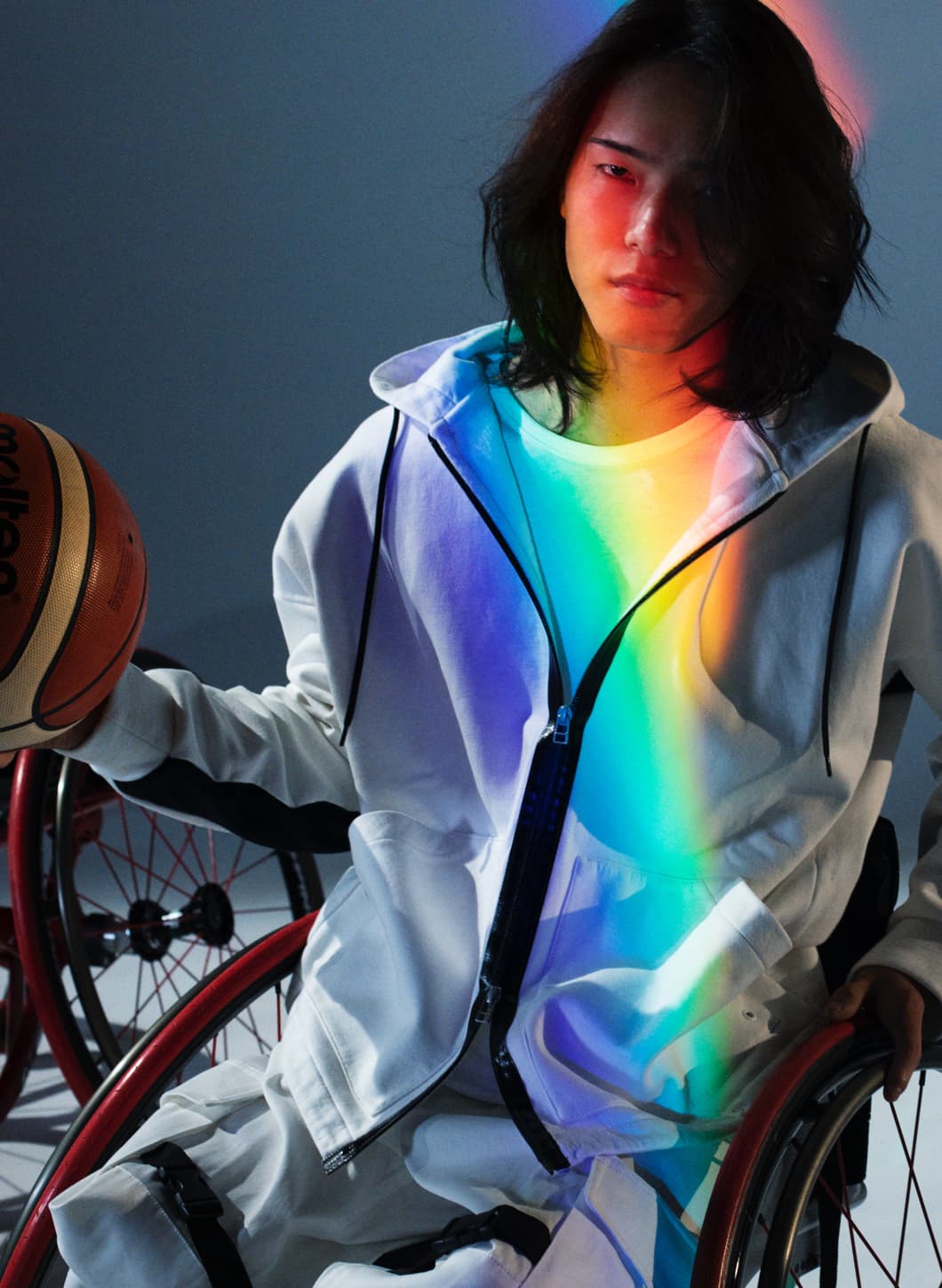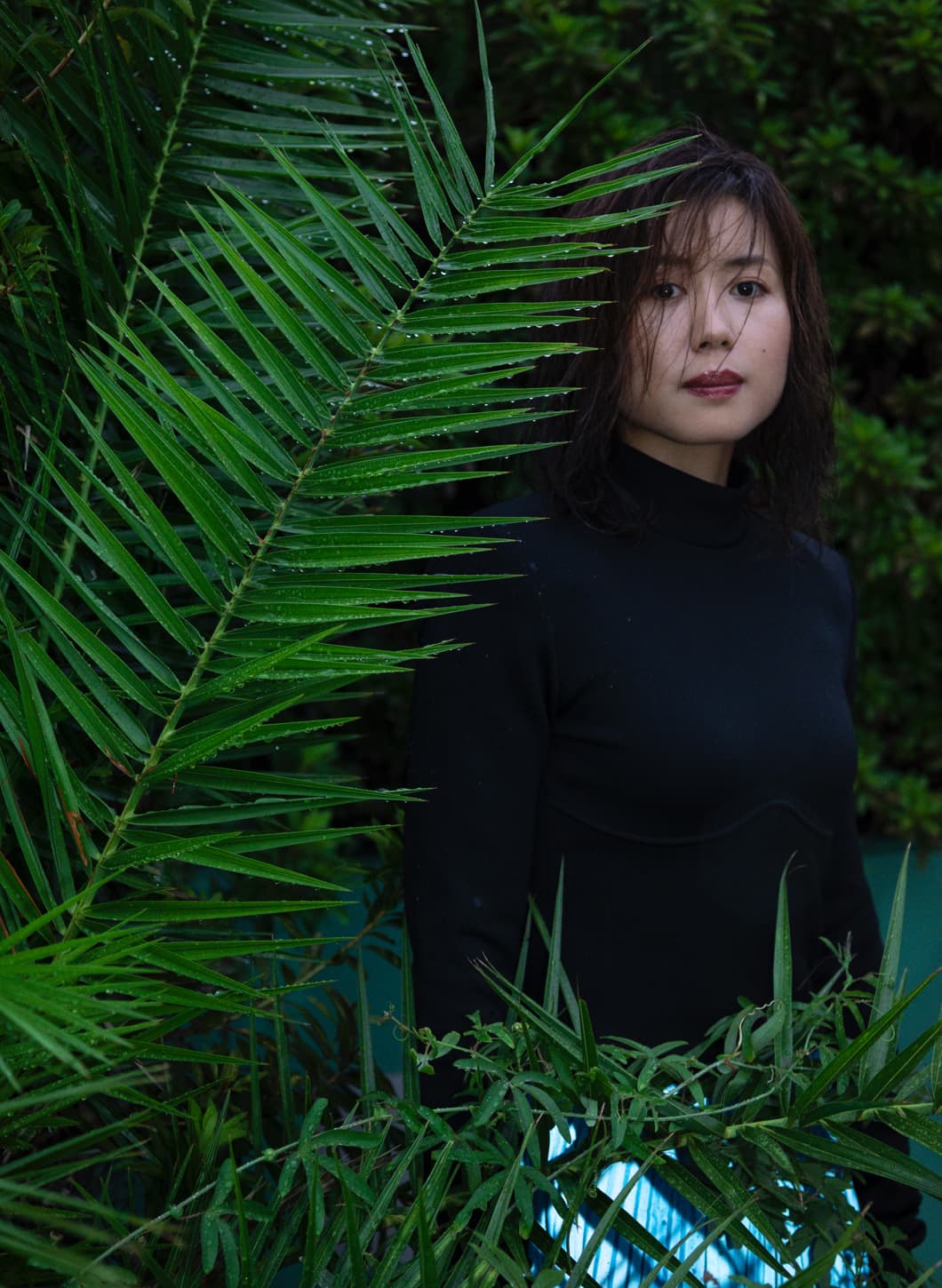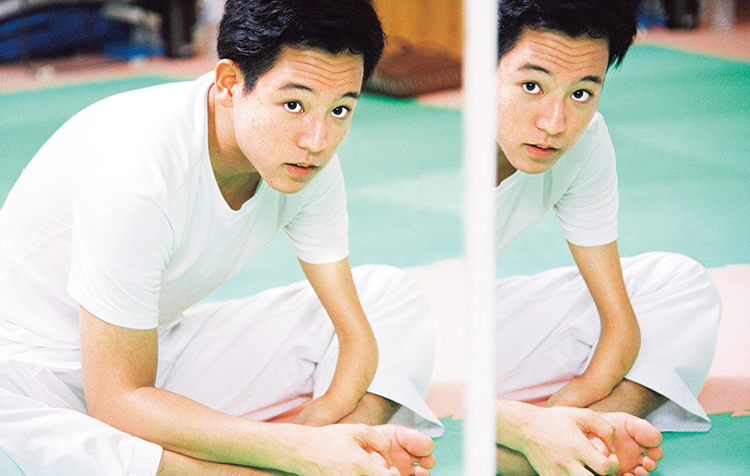
Yusuke HOSHINO
Taekwondo
Photographs by Keisuke NAGOSHI | Text by Senichi ZOSHIGAYA
- How Taekwondo Opened Up My World:
- A Day in the Life of a High-Schooler and Paralympic Hopeful
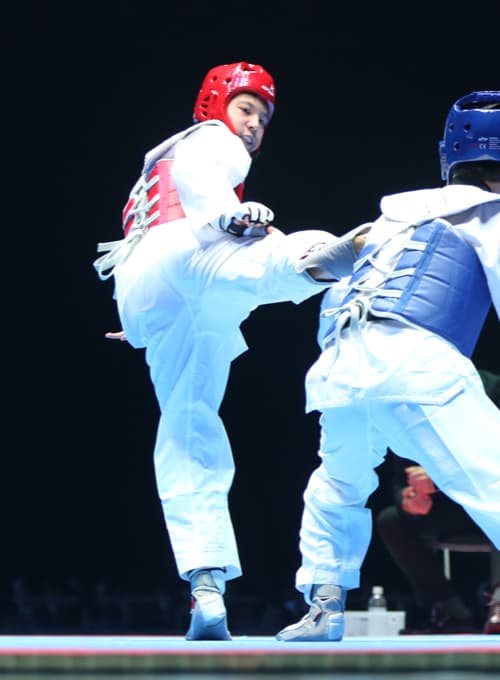
©Parasapo
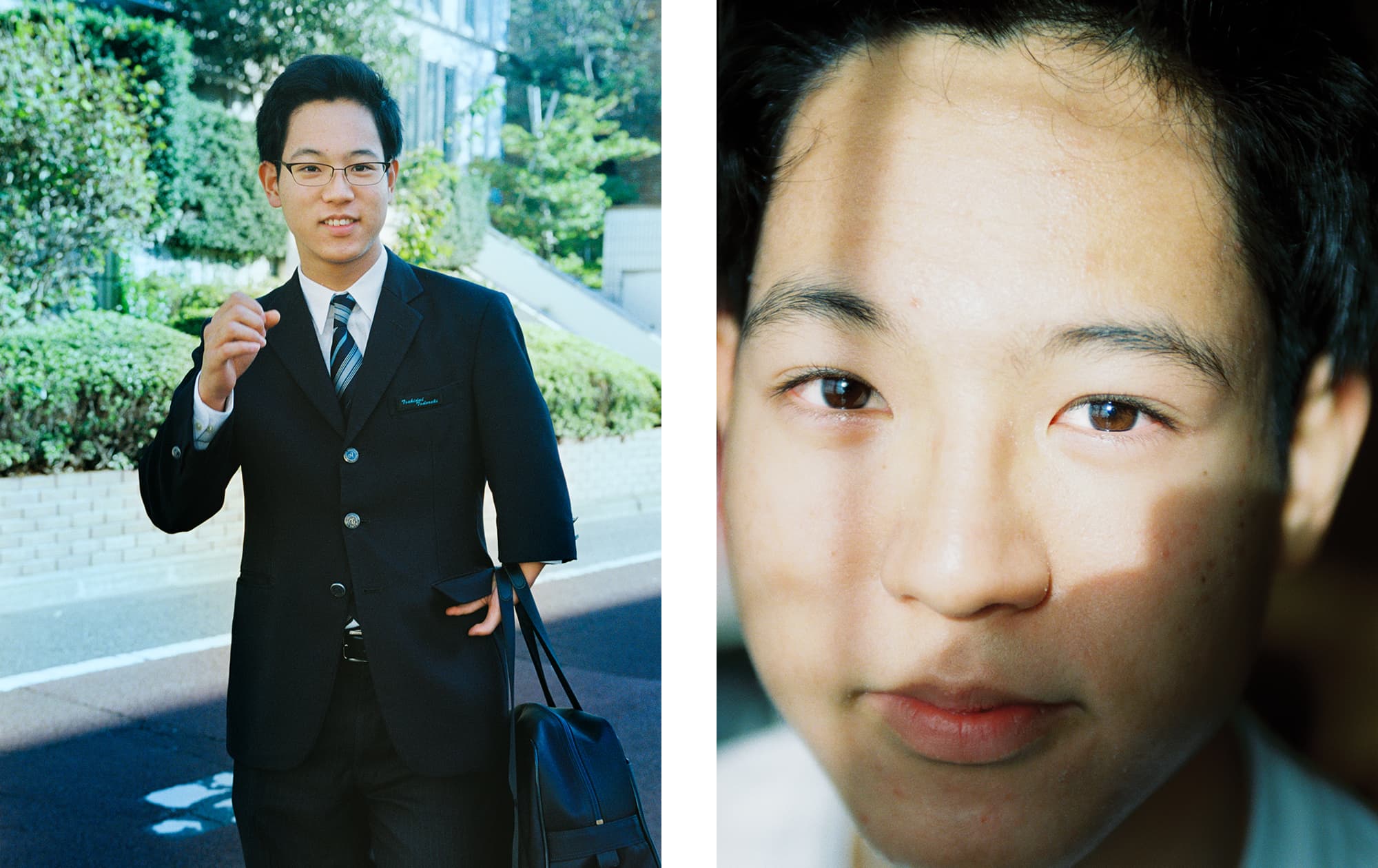

His Discovery of Taekwondo
So says his mother, laughing, as she bustles around getting things ready for dinner. We’re in their living room, which is flooded with the warm light of the late autumn sunset.
Her remark seems to embarrass Hoshino. “I do want to get bigger. So I’m eating a lot,” he says.
Yusuke Hoshino is currently a third-year in a private high school, about a 20-minute walk away from his house in Setagaya City, Tokyo. We meet him in front of the gates of his high school after his classes are over, and exchange a quick greeting. As Hoshino makes the hasty walk back to his house, our photographer raises his camera and snaps a photo of him. “I’m not very good at having my photo taken,” Hoshino says, looking a bit embarrassed.
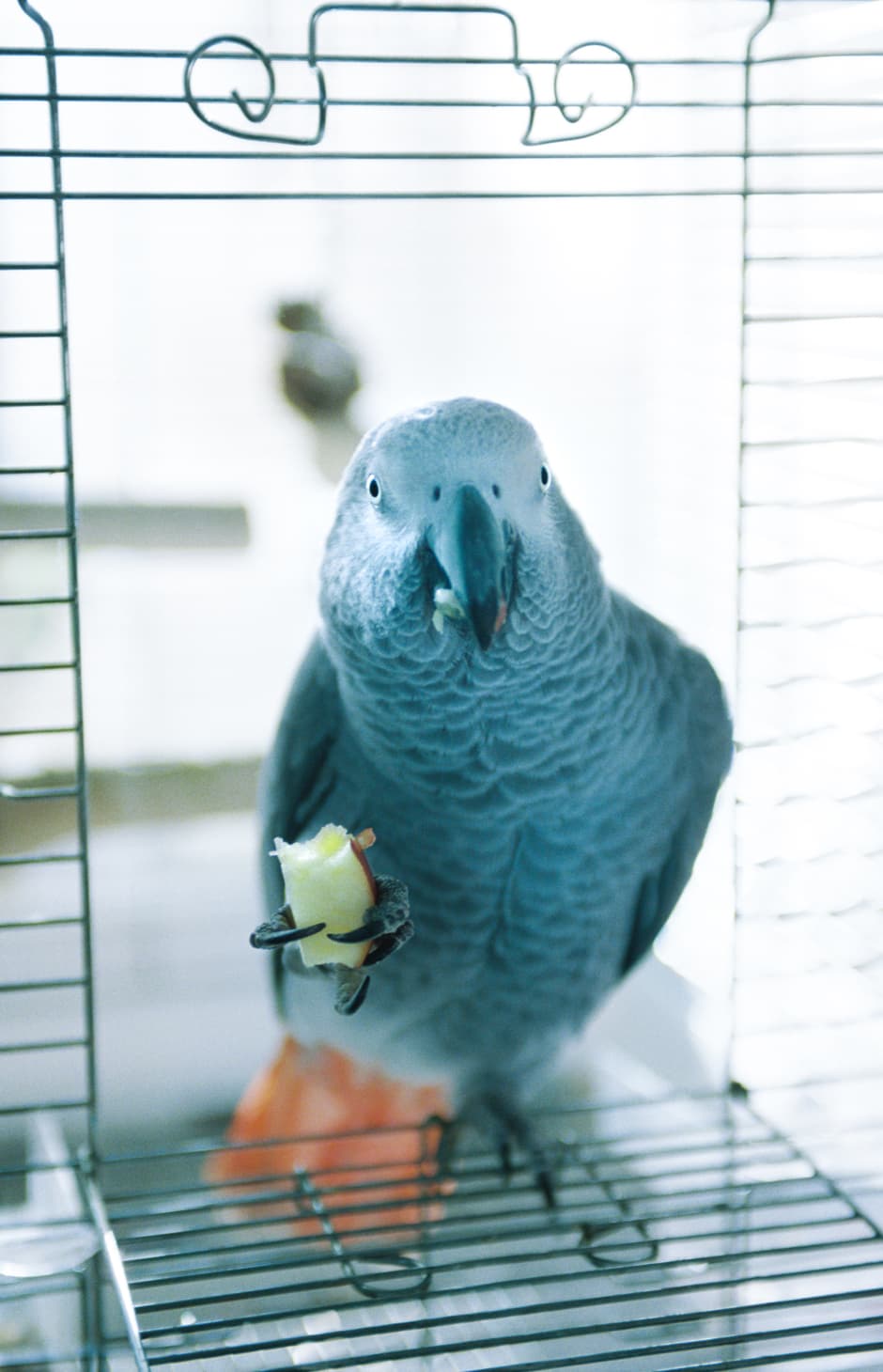
Hoshino’s taekwondo aspirations came about when he participated in the Parasports Next-Generation Talent Program, hosted by the Tokyo Metropolitan Government. It had been at his mother’s recommendation. Hoshino, who suffers from osteogenesis imperfecta on his right arm, told me, “Honestly, I wasn’t very good at sports in general.” Though he’d been obsessed with playing soccer with his classmates in the U.S., where he lived from when he was a year and a half old to his second year in elementary school, he’d become completely distanced from sports since coming back to Japan, and attending his current combined junior high/high school. Every day, he’d come home from school, grind away at online games, then eat dinner before going right back to gaming. Over time, he gained weight, and his day-to-day life gradually lost its structure.
“They make you choose three sports in advance that you think you’d be interested in. I chose swimming, archery, and triathlon. I didn’t have much confidence in my physical strength so I gave up on triathlon pretty quickly, and then I thought I’d like a point-based sport, since I liked games, so I crossed off swimming too. Then, when I had some free time, I just so happened to participate in a taekwondo demonstration. And that was when Mr. Takagi, who was Chairman for Para Taekwondo of the All Japan Taekwondo Association at the time, came up to me and said, ‘You have the body for taekwondo.’”
So says Hoshino about his discovery of taekwondo. However, his ultimate reason for getting into the sport seemed to come from somewhere a little different.
He looks away from me for a moment, and says quietly, “I was also getting harassed a bit at school. And I guess a part of me just wanted to knock them out, too.”
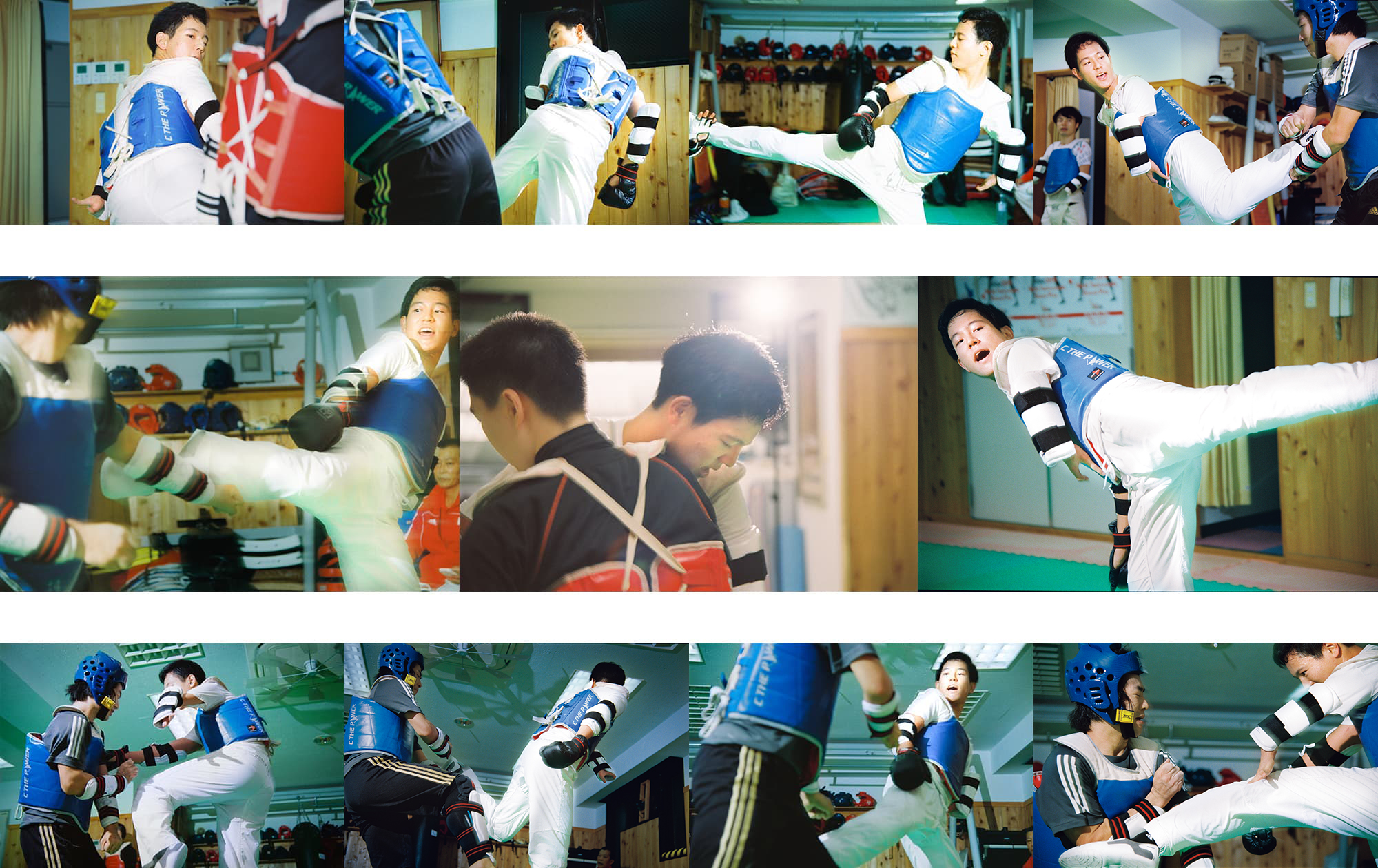
“This is Yusuke Hoshino, and He’ll Be Training for the Paralympics”
of children yelling energetically can be heard from the second story of a multi-tenant building, a little ways away from the crowds near the station. The Genbukan, which has more than 10 branch dojos in the greater Tokyo area, has trained many taekwondo athletes that have since gone on to represent Japan at international tournaments. It is also one of Japan’s most well-known dojos, having made significant contributions to the popularization of taekwondo as a lifelong sport, from children 3-4 year old all the way to working adults.
Hoshino has trained at the Genbukan since he started taekwondo. He eats dinner at home, then leaves his house at 6:30 P.M. to get on the train to the dojo. He gets to the dojo at 7:30, then goes through a thorough warm-up and stretch routine before his real training, which starts around 8:00. By the time he’s done, it’s already 10:30. He then packs up his things, and by the time he gets home, it’s often close to midnight. He does this four times a week.
“The training just constantly pushes my limits, so at first it was really hard mentally. They’d make me do the same things as people who’ve been doing taekwondo since they were kids, and I’d think, I can’t do that. And then when I do end up not being able to do something, there’s this atmosphere that’s like, Wow really, you can’t do that? What are you doing? I’d never been to a dojo before either, so once I took a break without asking anyone and got yelled at so hard. At the time I just thought, I’m tired so I’m resting, what’s wrong with that [laughs]?”
On this day too, Hoshino showed up to the dojo right on schedule. After greeting the leader of the dojo, Shihan Hyun Soon Kang, he changes into his training wear and starts stretching. In the senior training session, he rubs shoulders with high-level able-bodied athletes like Kourai Murakami of the Men’s 63kg Class and China Murakami of the Women’s 46kg Class, both of whom are designated training athletes for the All Japan Taekwondo Association.
“When Hanshi Kang introduced me, the very first time I went to the dojo, he said, ‘This is Yusuke Hoshino, and he’ll be training for the Paralympics.’ I mean, you can’t be introduced like that and not try your absolute hardest [laughs]. So maybe it was less like I became more and more obsessed with taekwondo, and more like I kind of had to. Just trying to keep up with the training took all I had.”
There is one more athlete at the Genbukan who is training for the Paralympics. Kenta Awatari, 33 years old. Though he has spent even less time than Hoshino training for taekwondo, he’s been able to apply the athletic skill he’s cultivated over his years playing soccer to rise quickly to prominence in both domestic and overseas tournaments, becoming one of the most promising members of the Japan national team. Hoshino, who looks up to him as a sort of older brother, says Awatari has been a huge source of support for him as he works towards the Tokyo Paralympics.
“I recently upped my class by one. If I’m going to try to make it on the Japan national team, I’ll have more of a chance if I compete in a class with less rivals. One of my goals is also getting to the Paralympics with Awatari, so instead of battling it out in the same class, I thought it’d be better if we worked towards Tokyo in different classes.”
Hence the conversation with his mother about eating more. It’s only just recently that Hoshino has begun working on his eating habits to try to gain weight, all while he goes through the day-to-day rigors of his training. The qualifiers for the Tokyo Paralympics will be held in the new year, on January 26, 2020. There’s only so much time he has left.
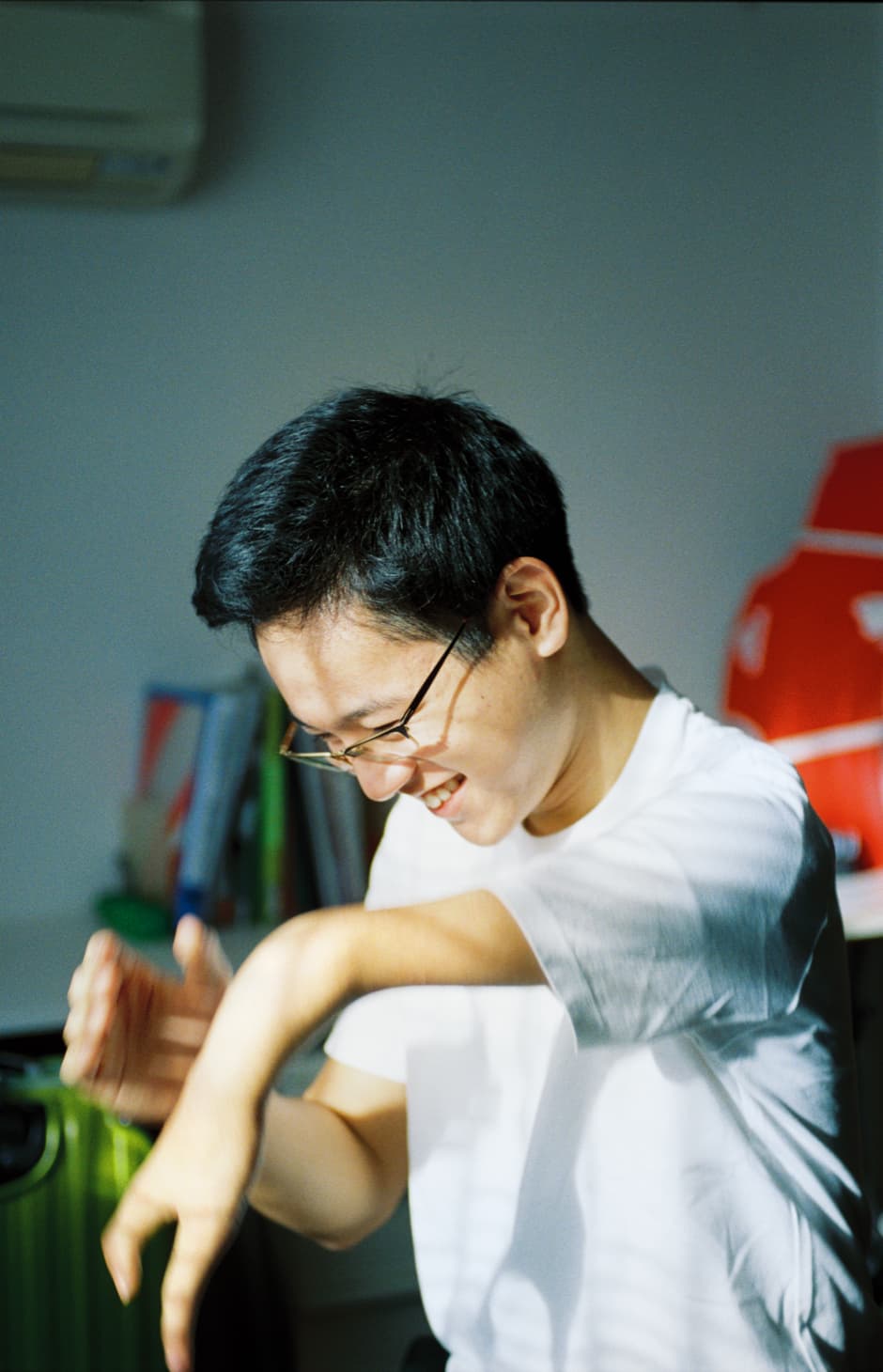
Confidence Gained and Weak Points Uncovered
“Don’t get distracted! It won’t just be you getting hurt—you’ll hurt your opponent too!”
Hanshi Kang yells from behind them, his eyes narrowed. In between sparring sessions, the athletes bend over, hands on their thighs, their chests rising and falling as they get their breathing under control.
In para taekwondo, athletes like Hoshino and Awatari, who have impairments in their arm, use only their legs to attack, winning points when they’re able to hit their opponents’ torso. Hoshino’s general mentality, as evident in the way he speaks, is very calm, very collected, with not much in the way of emotional ups and downs in his everyday life. For him, the winning pattern has been to observe what his opponent is doing, how they’re performing, win the first point with a front-leg kick, then rack up points afterwards.
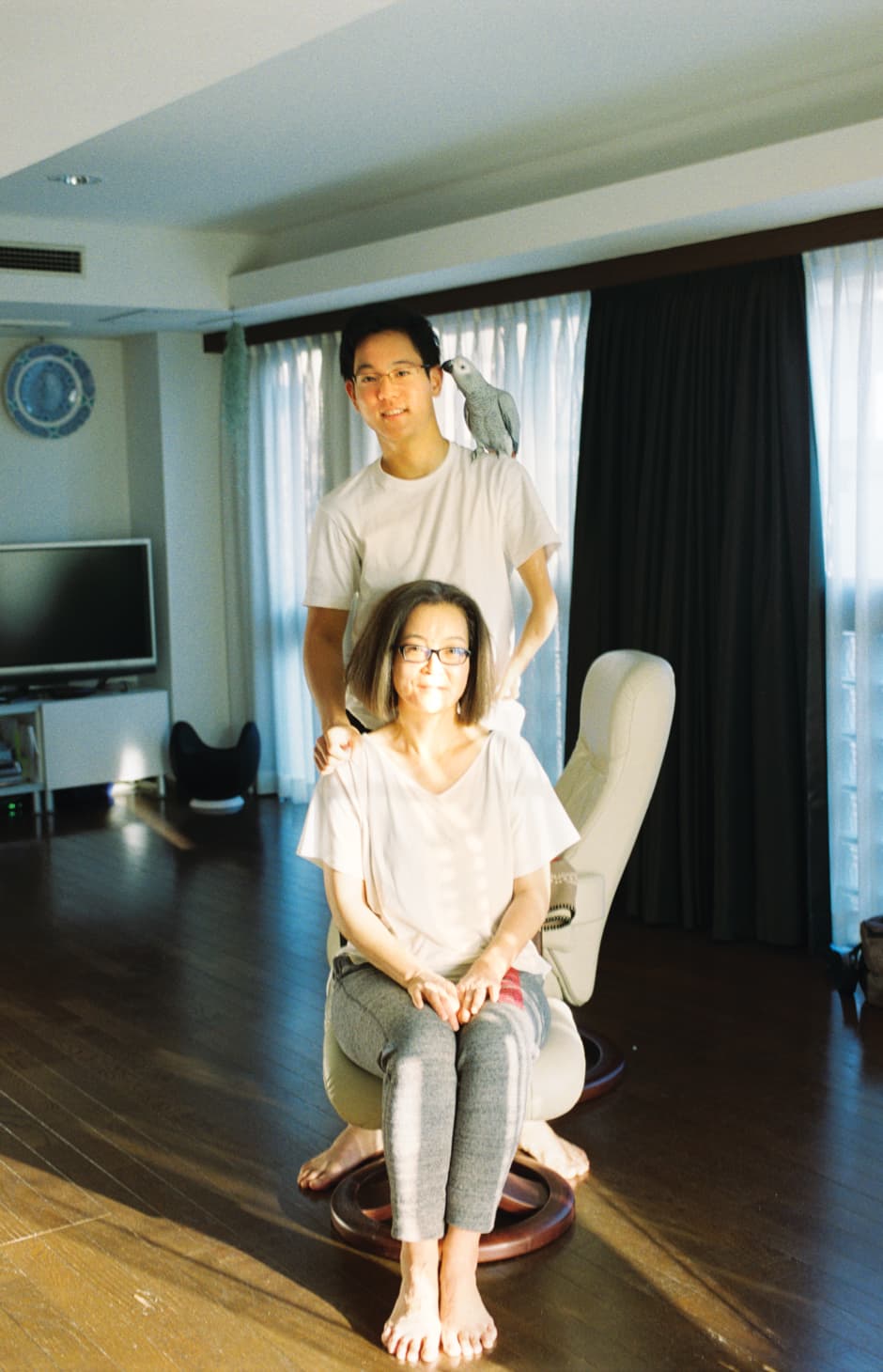
“When we’d gone against each other before he absolutely annihilated me. I couldn’t do anything at all… It was Ito, actually, that made me realize how much it could hurt to be in these matches, how hardcore taekwondo could be. I think, though, that that kind of lit a fire in me. I really went in on analyzing him, well before the match—watching and rewatching videos from his matches to see what his kick tendencies were, what I’d need to watch out for. I also got advice from my Genbukan teammates. That’s what got me to that victory. I was so, so happy about it.”
Hoshino lost his very next match, however, against an opponent ranked No. 1 in the world. Unlike Japanese taekwondo athletes, who tend to fight very strategically, top-ranked foreign athletes tend to be more aggressive, using their physicality to win matches. Hoshino’s style of reading the battle and building a strategy in real-time has yet to work against opponents of that caliber.
“Honestly, it’s really not an easy thing to win in tournaments where you have to play foreign athletes, let alone the Paralympics. When they attack you really aggressively it makes your brain freeze up, and you end up just getting really aggressive too, by reflex. But with these opponents that are bigger than you or stronger than you, that’s exactly what they want. There’s still so much I need to overcome if I want to win out there in the world.”
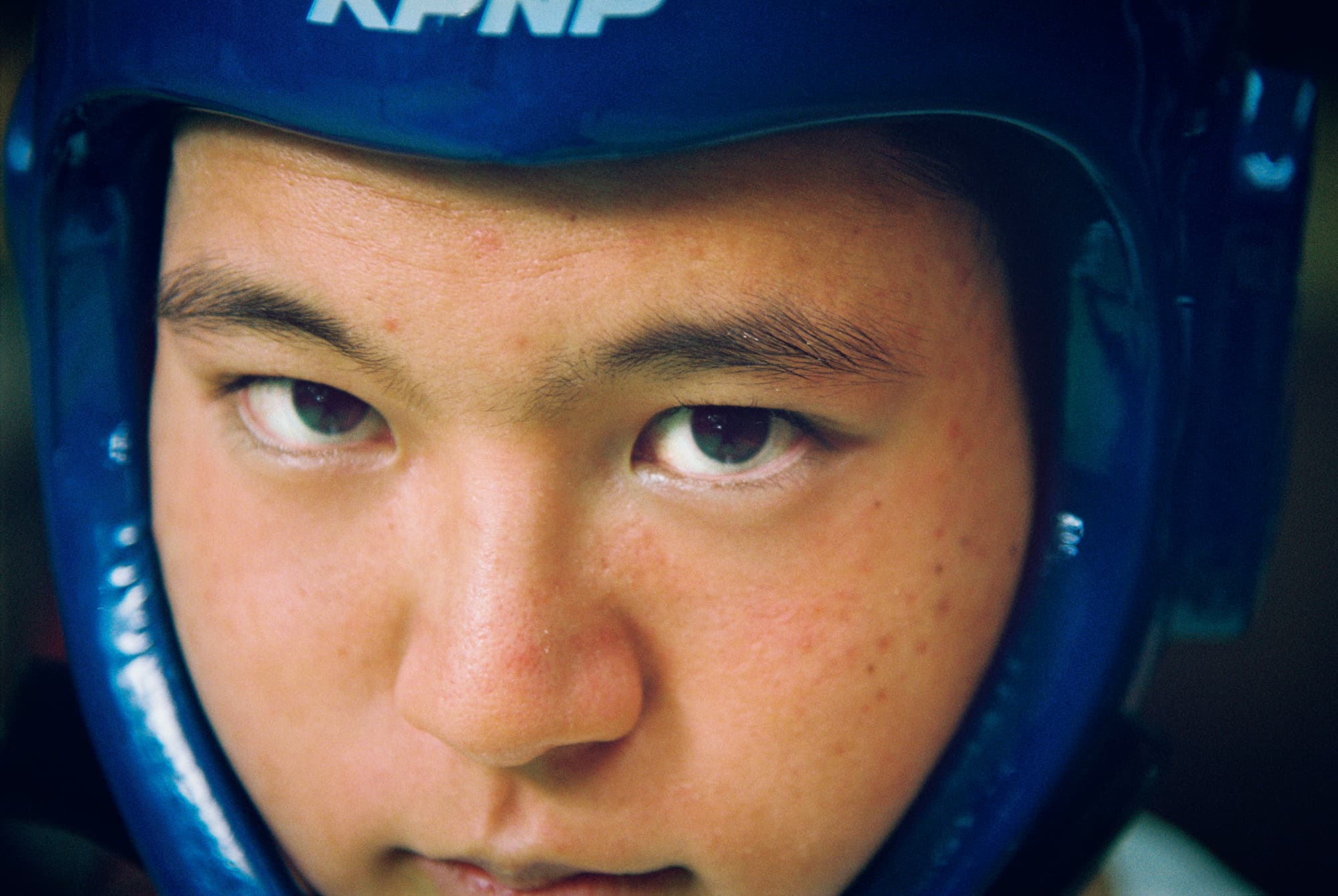
High-Schooler Balances His Priorities
So says Hanshi Kang, about his expectations for his star pupil and his future growth. As a third-year in high school, Hoshino must balance his efforts between the qualifiers for the Tokyo Paralympics with his upcoming university entrance examinations. Again, his time is limited. There aren’t very many people in the world who’d be capable of working towards both the Paralympics and their university entrance exams. Which is why, for 18-year old Hoshino, it must be a confusing time indeed, with decisions to be made about how he’ll spend the end of 2019, how he’ll balance his two priorities. Hoshino himself, however, doesn’t seem to be very affected by the worry and the pressure from those around him.
He says, in his usual matter-of-fact tone, “At university I want to learn about coaching theory, maybe learn how to be a trainer—something that I could use in taekwondo. I’m thinking I want to do a job like that in the future. But right now, taekwondo is a little bit higher on my list of priorities than studying.”
Taekwondo will be an official event at the Paralympics for the first time in Tokyo 2020. Whether Hoshino’s name will be etched into the first chapter of the event’s history is something that nobody—not Hanshi Kang, not his mother, not even Hoshino himself—knows as of yet. Now that I’ve personally seen the efforts they are making towards this goal, however, I can’t help but imagine the sight of Hoshino up there on that podium at the Tokyo Paralympics.
Yusuke HOSHINO
Born in 2001 in Nagoya. Men’s 75kg- Class in the Para Taekwondo event. Congenital osteogenesis imperfecta (K44). Participated in the Tokyo Metropolitan Government-hosted Parasports Next-Generation Talent Program as a third-year in junior high school, and discovered taekwondo. Since, he has trained and been a member at the Genbukan, one of the highest-level dojos in Japan. In 2018, he came in third in the Men’s 61kg- Class at the All Japan Taekwondo Championship Para Kyorugi, and third in the Men’s 61kg- Class (K44) at the Pan Am Para Taekwondo Championships. Though he has only been a competitive member of the sport for about three years, he has participated actively in international tournaments and joint training camps with foreign athletes since 2019, gaining steady experience with the world’s best in order to build up his own athletic career.

